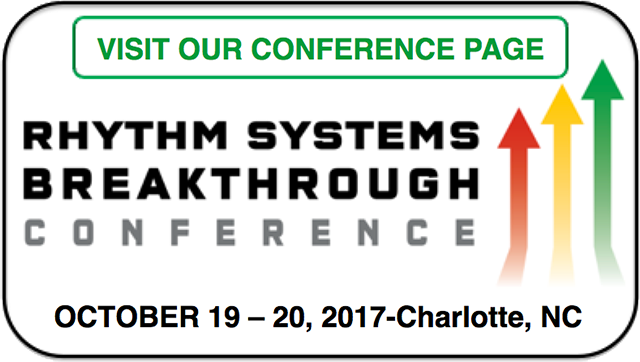Frequently, people draw connections in their minds when it comes to an org chart. To many people,  an org chart defines “who” reports to “whom;” in a way, the chart defines the degree to which people have (or don’t have) authority. We need org charts for a lot of reasons: They give visual placement of who leads what function or team (depending on how your chart is organized), they give a sense of order, they define to a person outside your company who’s doing what within your company, they provide clarity and insight into roles and responsibilities, etc. These reasons are all very good.
an org chart defines “who” reports to “whom;” in a way, the chart defines the degree to which people have (or don’t have) authority. We need org charts for a lot of reasons: They give visual placement of who leads what function or team (depending on how your chart is organized), they give a sense of order, they define to a person outside your company who’s doing what within your company, they provide clarity and insight into roles and responsibilities, etc. These reasons are all very good.
Your Org Chart: What Really Matters…
But here’s the stinger: Your customers really don’t care about your organizational chart. What they care about is how well you serve them. Rummler and Brache note that how well you serve them depends on what goes on in the "white space" of your organizational chart. Look at just about any list of great places to work. You’ll see a lot of commonalities, first of which is an incredible work culture and second of which is their reputation for top-of-the-line customer service.
I share with my clients that the degree to which you have internal customer service is the degree to which you have external customer service. I find it fascinating to watch leaders who are willing to design their companies around internal service to each other by creating the structure, the time, and the place for exchanging views, perspectives, insights, and newly gained knowledge. The creation of employee-centered cultures, then, begins to feed customer-centric cultures. Done well, it’s a work of art. (Think Southwest Airlines, Zappos, Google, etc.).
While your org chart has many purposes, the primary purpose should be service, and that’s defined by what’s going on in the white spaces of your chart—in the highways and byways of your company’s parking lots, hallways, and water coolers.
Yet when we think about it, org charts are almost always created for the people within a company. It’s no surprise, then, that org charts have more or less become a definition of who has and doesn’t have the power in a company. How such a structure helps to serve the end customer is rarely discussed. We’ve probably all seen org charts where the customers are in a box at the top. That’s fine as a visual, but in all honesty, many companies that do this are simply making themselves feel better. There’s limited discussion around what the customer experience actually is (or should be).
The bottom line: Your strategic intent is only as good as your capacity to execute it. So, how might an org chart help you do that?
Watch Your Thinking…
I remember helping a company do a re-organization due to their gaining two new huge accounts at the same time. The executive team simply had to begin shedding some of the roles and responsibilities they had been doing up until this time. With the emergence of these two new accounts, the company immediately became more complex. Members of this executive team knew (intellectually) that they would have to shed some of what they had become accustomed to doing, but doing so was hard for some of them. In reality, they needed to shed and distribute responsibilities before now; but, as I said, it’s just easier to hang on to what we know even if what we know is exhausting us.
In this process, the company created small groups of employees—a small group for each industry the company serves. I called these groups “Circles of Excellence.” The intent was to give their people who work with certain industries the opportunity to come together on a regular basis to talk about whatever might be applicable at the time: new regulations, what’s working well, what’s not, news updates, how a process needs to be adjusted or streamlined, etc. There was a group for healthcare, one for IT, etc.
The dialogue that followed turned out to demonstrate how they were thinking about the purpose behind their organizational structure.
Me: “I love the way you’ve created these Circles of Excellence! They’ll keep you up-to-date, and they’ll help you serve your customers to a much better degree. They’ll also help you with continuous improvement, quality of delivery, and so much more.”
The response: “Well…these Circles are for us. We have to stay on top of things in each industry. It’s just a way to do that. It really doesn’t do anything for our customers.”
Me: “I see that they’ll help you stay smart. But because you’re staying smart, you’ll be able to serve your customers to a much higher degree.”
Response: “It really doesn’t have anything to do with our customers. It has to do with helping us stay on top of things.”
Me: “Yes, you’ll stay on top of things. But, I invite you to extend on that thinking. Information shared on a new regulation, for instance, in your healthcare circle will help you avoid delays, will help you know what some of your customers might not know (so you can educate them), will streamline your internal processes by sharing what’s working well and making refinements that may be needed, etc. You’ll be increasing your ability to serve.”
Response: --blank stares—
Me: “Then why do you have them? If they don’t help you do what you do better, then you might just consider tossing them out because all they’re doing is cluttering up the landscape on your chart.”
This company sees an organizational chart as simply “who’s doing what” with no link whatsoever to how their chart helps them serve their customers better. Once again, customers don’t care who reports to whom. This type of thinking stems from the Industrial Age when 'specialization' and ‘assembly line mentality’ were the norm. It’s a line of thinking that doesn’t easily translate to a progressive company in today’s world.
Simplification vs. Complication
My wish is that people would look at an org chart for how it best serves a line of end customers. Complicating a structure might look impressive on paper, but such complication will stagnate just about every single Strategic Plan or Quarterly Priority by creating a bureaucratic nightmare. This isn’t to say that you have to create a structure around every customer segment you serve. In fact, to do so would require a matrix-type structure, and the more of a matrix-type structure you have, the more open you are to inefficiencies driven by duplication of effort, silo mentality, confusion (due to who actually reports to whom), etc. But, create a way to garner the collective intelligence of your people so that they can, in turn, serve customers to a higher degree is good food for thought.
To do that, though, people have to get out of their boxes on the org chart and talk. By having Circles of Excellence (or whatever you might choose to call them), you simplify internal systems and processes vs. complicate them. As your company grows, it stands to reason that the level of complexity will grow as well. The confusion that results from one person doing too much work limits that person’s ability to serve customers. It isn’t about that person. It isn’t about the company. It’s about giving line-of-sight to customers as well as to employees. It’s about creating strong lines of communication up and down the chain and learning from each other so the customer can be served better.
What To Do…
As for accountability, your org chart isn’t a power play. The name in a box is obviously fine, but what matters is how that person leads others toward higher levels of success. If something goes awry down the chart, point the finger up the chart rather than down the chart. Leaders are always happy to take recognition for a job well done, but they aren’t so willing to necessarily accept it when things don’t go well.
The goal, then, is to create a culture of interdependent high performance teams—each team working together with common sight as to what will best help your end customer.
To that end, here’s some food for thought and/or discussion with your executive team:
- Start with a discussion around your company’s Core Purpose.
- What is our Purpose?
- How does that Purpose translate into helping us serve our customers better?
- What activities do we do (or might we do) that help customers to see us differently than our primary competitors?
- What cross-functional Circles of Excellence might we create, and why?
- How will we capture the knowledge so we can take action?
- What might be the structure of each of their gatherings so that getting together is meaningful to them as well as to the company?
- Might we create Knowledge Hubs for the purpose of staying smart?
- If so, what might these Knowledge Hubs look like?
- If we created an Achievement Network, what would that look like? How might something like this help us serve our customers better?
- What problems do we consistently hear from our customers?
- What are our Quarterly Priorities for resolving one or more of these challenges?
- What is it about the way we think around here that is keeping some of these issues from being resolved? (Remember: The customer doesn’t care about your company’s structure; they just care about getting their problem solved.)
- Might we form an Innovation Circle?
- If so, who should be a part of it? (And, make sure there are people in this Circle that actually touch the customer so you don’t innovate something nobody really wants!)
- Define: How do we, as an Executive Team, champion service?
- What kind of service mentality are we creating?
- How does that mentality boost our own internal customer service to each other?
- How does it translate to our external customer service?
- How is information cascaded within our company?
- Is it effective?
- Do people know what we need them to do as a result of that information?
What to Expect
These groups, teams, hubs, networks, etc., that you build into your organizational structure will require three things if they are to work well:
- Leaders who aren’t threatened by the empowerment given to these people,
- A culture of transparency, and
- Action.
When an organizational chart is working for you, you’ll see an increase of energy within your company. That energy, then, translates into an incredible level of customer service that only a culture of transparency can create. Customer concerns are faced and resolved. Low performing employees have to raise their own performance bar, silos begin to break down, systems and processes improve at a much faster pace, proactive problem-solving is the norm, and personal accountability (and pride for a job well done) go way up.
As for “Action,” it’s been said that "knowledge is power," but that’s not really true. Applied knowledge is power. If those in each Circle of Excellence don’t do anything with the knowledge they're gaining, then why take time out of the day to meet together? Without understanding how the information from these Circles will become actionable, they are of limited value. In time, they’ll simply become yet another boring meeting that people have to attend. Therefore, design them to walk away with actionable items that are measurable.
Instead of simply putting people in boxes, put them on teams outside those boxes and let the white space of your organizational chart come alive.
Photo Credit: iStock by Getty Images
Photo Credit: iStock by Getty Images



 LinkedIn
LinkedIn
 Facebook
Facebook

